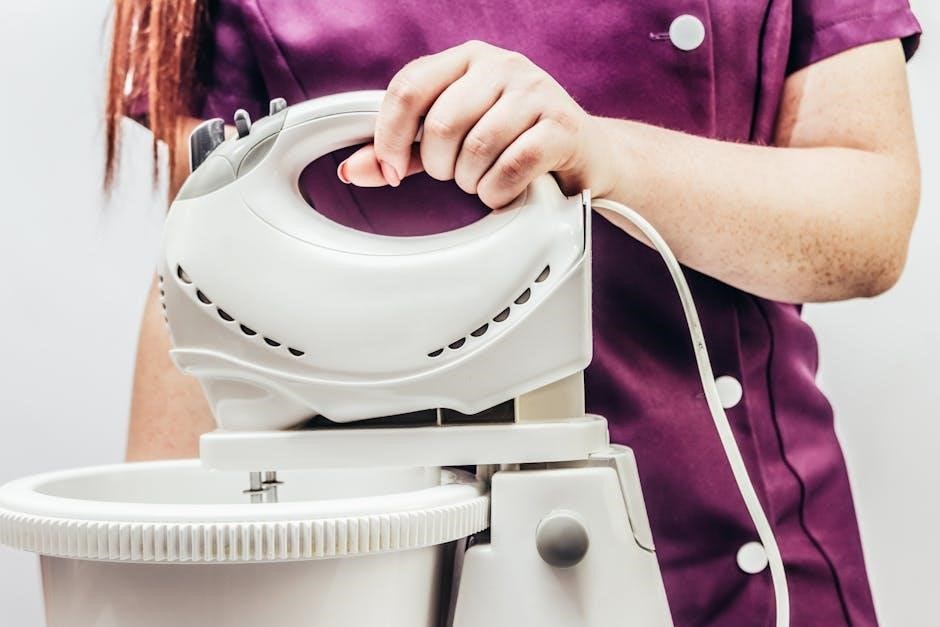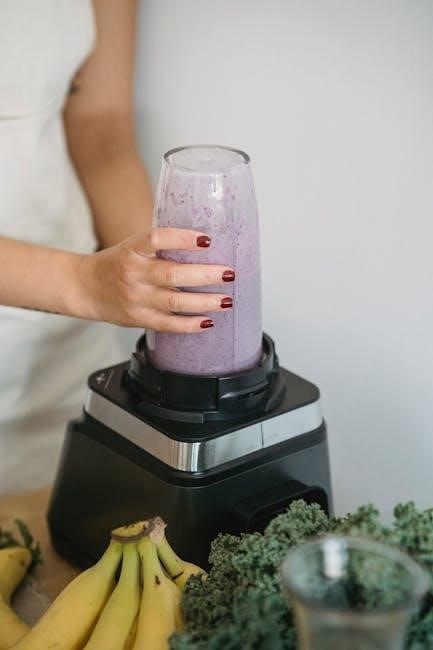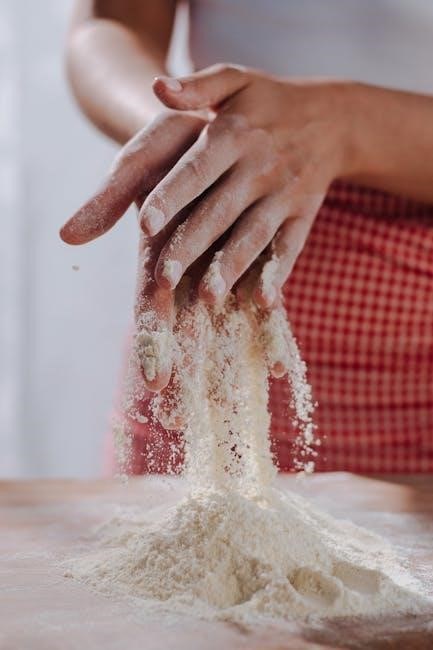PFR-97 is a bioinsecticide containing the fungus Isaria fumosorosea, effective against various agricultural pests. It plays a crucial role in integrated pest management (IPM) by targeting all pest life stages, ensuring sustainable crop protection and reducing environmental impact. Its compatibility with certain insecticides and fungicides makes it a versatile tool in modern farming practices.
Overview of PFR-97 as a Bioinsecticide
PFR-97 is a bioinsecticide containing the naturally occurring fungus Isaria fumosorosea. It effectively targets and controls various agricultural pests by infecting and killing all life stages, including eggs, nymphs, and adults. The fungus works by attaching to insects, germinating, and causing fatal infections. PFR-97 is environmentally friendly and offers a sustainable solution for pest management in crops.
Role of PFR-97 in Integrated Pest Management (IPM)
PFR-97 plays a vital role in Integrated Pest Management (IPM) by providing a bio-based solution to control pests. It targets all life stages of pests, reducing infestations effectively. Its use aligns with IPM principles by offering a sustainable alternative to chemical pesticides, minimizing environmental impact, and promoting ecosystem balance. This makes it a valuable tool in modern agricultural pest management systems.

Materials and Equipment Needed for Mixing PFR-97
PFR-97 requires clean, non-chlorinated water and measuring tools. Essential equipment includes spray tanks, agitators, and protective gear for safe and effective mixing.
Required Materials: PFR-97 Product, Water, and Measuring Tools
The primary materials needed are the PFR-97 product, clean, non-chlorinated water, and precise measuring tools; Ensure accurate measurements to maintain the recommended mixing ratio for optimal efficacy and safety.
Recommended Equipment: Spray Tanks, Agitators, and Protective Gear
Use clean spray tanks and agitators to ensure proper mixing and dispersion of PFR-97. Protective gear, including gloves and eyewear, is essential for safe handling. Agitation for 20-30 minutes guarantees a uniform suspension, enhancing product efficacy and application consistency.

Safety Precautions When Mixing PFR-97
Wear protective gear, including gloves and eyewear, to prevent skin and eye exposure. Ensure proper ventilation and avoid inhalation of the product during mixing.
Personal Protective Equipment (PPE) for Handling PFR-97
Wear long sleeves, gloves, and eye protection when handling PFR-97 to prevent skin and eye irritation. A dust mask is recommended to avoid inhaling the product during mixing or application.
Safe Handling Practices to Avoid Exposure
Avoid inhaling PFR-97 powder and prevent contact with skin or eyes. Wash hands thoroughly after handling and avoid eating or smoking during application. Ensure good ventilation in mixing areas and follow label instructions carefully to minimize exposure risks.

Mixing Rates and Application Methods
PFR-97 is typically mixed with clean, non-chlorinated water at a rate of 28 ounces per 100 gallons. It can be applied as a foliar spray or through chemigation systems for efficient pest control. Proper agitation ensures uniform suspension, maximizing effectiveness. Always follow label instructions for specific rates and methods tailored to your crop and pest management needs.
Recommended Mixing Rates for Different Application Methods
PFR-97 is typically mixed at 28 ounces per 100 gallons of clean, non-chlorinated water for foliar sprays. For soil drenches or chemigation, the same rate applies, ensuring even distribution. Proper agitation for 20-30 minutes is essential to maintain a uniform suspension. Always adhere to label instructions for specific rates tailored to your application method and pest management goals.
Application Methods: Foliar Spray, Soil Drench, and Chemigation
PFR-97 can be applied as a foliar spray, soil drench, or through chemigation systems. For foliar spraying, mix with clean water and apply evenly to ensure full coverage. Soil drenches are applied to moist or pre-irrigated soil. Chemigation involves mixing PFR-97 into irrigation water for uniform distribution; Each method ensures effective pest control when applied correctly, following label instructions.

Compatibility of PFR-97 with Other Agricultural Products
PFR-97 is compatible with insecticides and copper-based fungicides but should not be mixed with other fungicides or applied within five days of using them.
Compatible Products: Insecticides and Fertilizers
PFR-97 can be mixed with most insecticides, enhancing pest control effectiveness. It is also compatible with copper-based fungicides, ensuring dual action against pests and diseases. However, avoid mixing with non-copper-based fungicides or other incompatible chemicals to maintain product performance and safety. Always test compatibility before tank mixing to prevent adverse reactions.
Incompatible Products: Fungicides and Other Chemicals
PFR-97 should not be mixed with non-copper-based fungicides, as this may reduce its effectiveness. Avoid tank mixing with incompatible chemicals, as adverse reactions can occur. Do not apply PFR-97 within five days of using stand-alone fungicides. Always test compatibility before mixing to ensure optimal performance and prevent potential interactions that could harm crops or reduce efficacy.

Timing and Frequency of PFR-97 Application
Apply PFR-97 during periods of high pest activity for optimal results. Repeat every 7–10 days as needed, ensuring thorough coverage to maintain efficacy and pest control.
Optimal Timing for Maximum Efficacy
Apply PFR-97 during early morning or late afternoon to maximize effectiveness. Ensure soil is moist or pre-irrigated for optimal results. Timing should align with pest life cycles to target eggs, nymphs, and adults effectively. Consistent application every 7–10 days maintains control and prevents pest resurgence. Monitor pest activity to adjust timing and ensure thorough coverage for sustained protection.
Frequency of Application Based on Pest Pressure
Adjust the application frequency of PFR-97 based on pest pressure. Apply every 7–10 days during high infestation periods. For moderate pressure, every 14 days is sufficient. Use foliar sprays or soil drenches for optimal coverage. Consistency is key to preventing pest resurgence and ensuring effective crop protection.

Post-Application Care and Monitoring
Ensure proper coverage and monitor pest activity after applying PFR-97. Regularly inspect treated areas and adjust future applications based on pest pressure and product performance.
Ensuring Proper Coverage and Distribution
After applying PFR-97, ensure uniform coverage by checking spray patterns and adjusting equipment as needed. Monitor treated areas to confirm the product has been evenly distributed. Proper agitation during mixing and application helps maintain suspension, ensuring effective pest control. Regularly inspect equipment to prevent clogging and maintain optimal spray performance throughout the application process.
Monitoring for Pest Activity and Product Performance
Regularly monitor treated areas to assess PFR-97’s effectiveness in controlling pests. Check for reduced pest activity and signs of fungal infection in target insects. Evaluate plant health improvements and ensure pest populations remain below damaging thresholds. Adjust application frequency or methods as needed to maintain optimal results and prevent pest resistance or rebound.

Storage and Shelf Life of PFR-97
Store PFR-97 in a cool, dry place, away from direct sunlight and moisture. The product has a shelf life of up to 24 months under proper conditions.
Proper Storage Conditions for PFR-97
PFR-97 should be stored in a cool, dry, well-ventilated area, protected from direct sunlight and moisture. Ideal storage temperature is between 40°F and 80°F (4°C and 27°C). Keep the product away from incompatible chemicals and ensure the container is tightly sealed. Avoid exposure to extreme humidity or temperature fluctuations to maintain product stability and effectiveness. Always check the expiry date before use.
Understanding the Shelf Life and Expiry Guidelines
PFR-97 typically has a shelf life of 24 months from the date of manufacture when stored properly. Always check the expiry date printed on the label before use. Ensure the product remains sealed and stored in a cool, dry place to maintain its effectiveness. Expired or improperly stored PFR-97 may lose potency, reducing its ability to control pests effectively.

Troubleshooting Common Mixing and Application Issues
Agitation problems may occur if PFR-97 isn’t fully dissolved. Check for clogs in spray nozzles and ensure proper mixing with compatible products to avoid reduced efficacy.
Addressing Mixing Inconsistencies and Agitation Problems

Ensure PFR-97 is fully dissolved in clean water to avoid mixing inconsistencies. Agitate the solution for 20-30 minutes before application to maintain uniformity. Proper agitation prevents settling and ensures even distribution, enhancing effectiveness. Regularly inspect and clean spray equipment to avoid clogs and maintain optimal performance during application.
Solving Application Errors and Improving Coverage
Adjust spray nozzles and pressure to ensure uniform coverage. Calibrate equipment to maintain optimal flow rates and droplet size. Regularly inspect for clogs and clean equipment to prevent uneven application. Ensure proper spray volume to cover all target areas effectively, avoiding under or over-application. Monitor weather conditions to minimize drift and ensure product efficacy.
Adhere to label guidelines, ensure proper mixing, and apply at optimal timings for maximum efficacy. Regular monitoring and calibrated equipment enhance coverage and pest control outcomes.
Mix PFR-97 with clean, non-chlorinated water, agitating for 20-30 minutes to ensure even suspension. Apply as a foliar spray, soil drench, or through chemigation systems. Avoid mixing with fungicides and ensure proper timing for optimal pest control. Always follow label instructions and safety precautions for effective and safe application.
Final Recommendations for Achieving Optimal Results
For best results, apply PFR-97 as a foliar spray or soil drench, ensuring proper agitation during mixing. Avoid mixing with fungicides and apply at optimal timings to maximize pest control. Always follow label instructions and safety guidelines to ensure effective and safe application, achieving desired crop protection and pest management outcomes.
